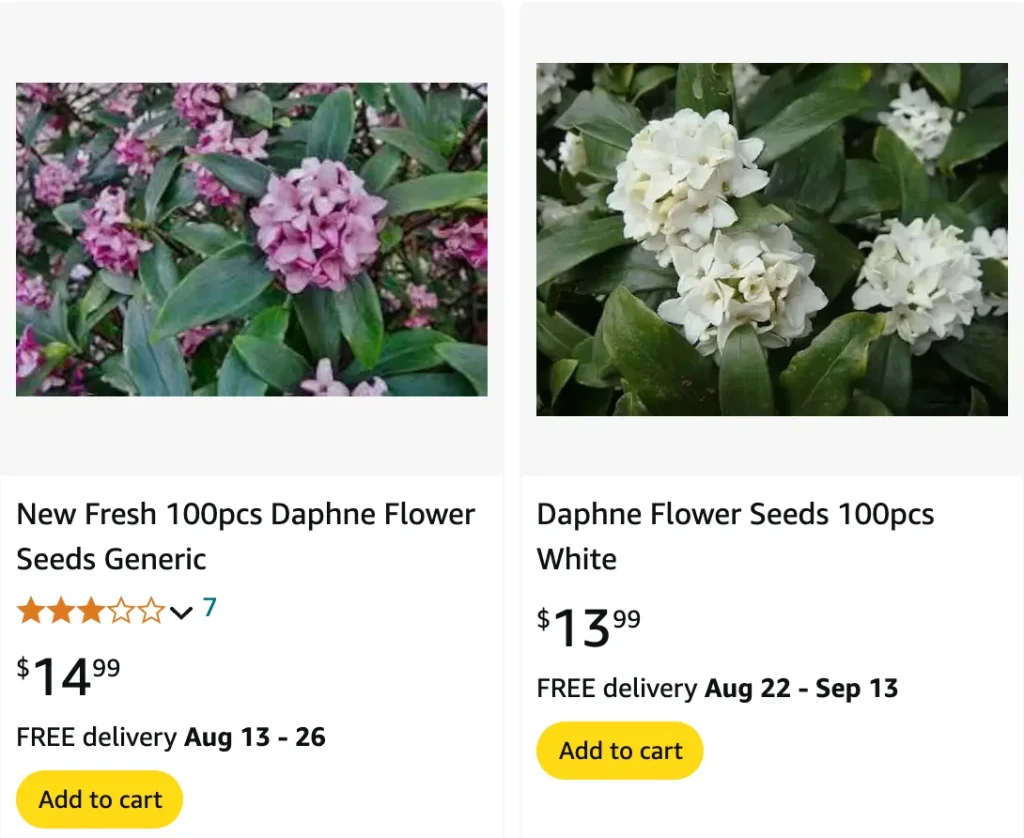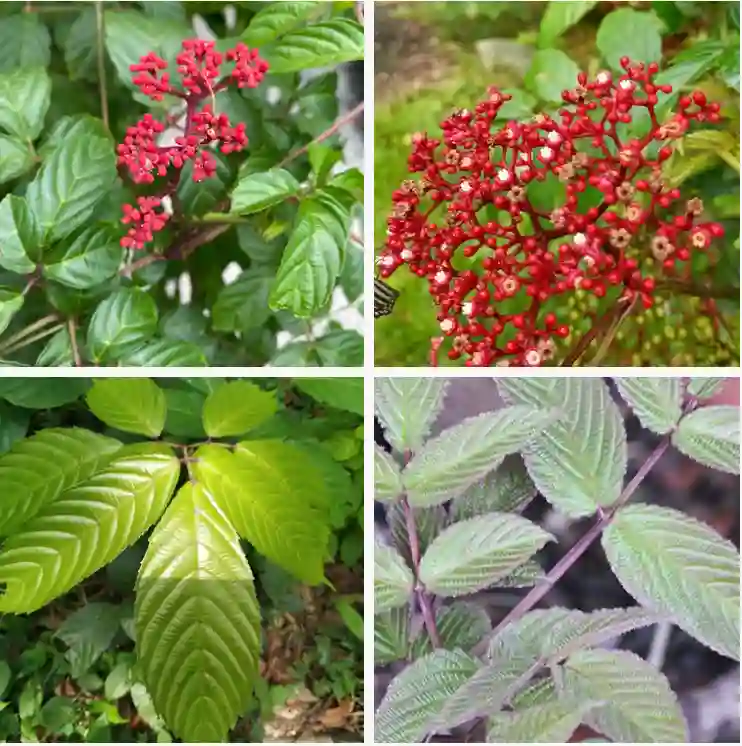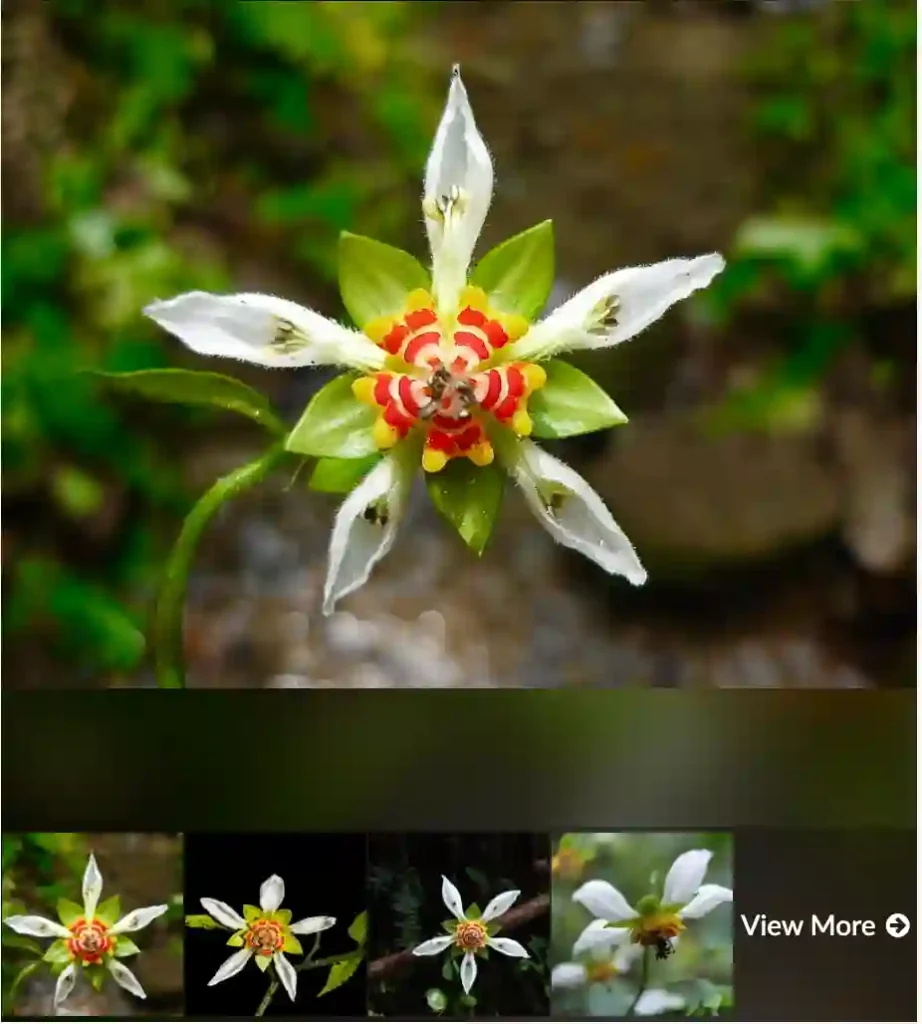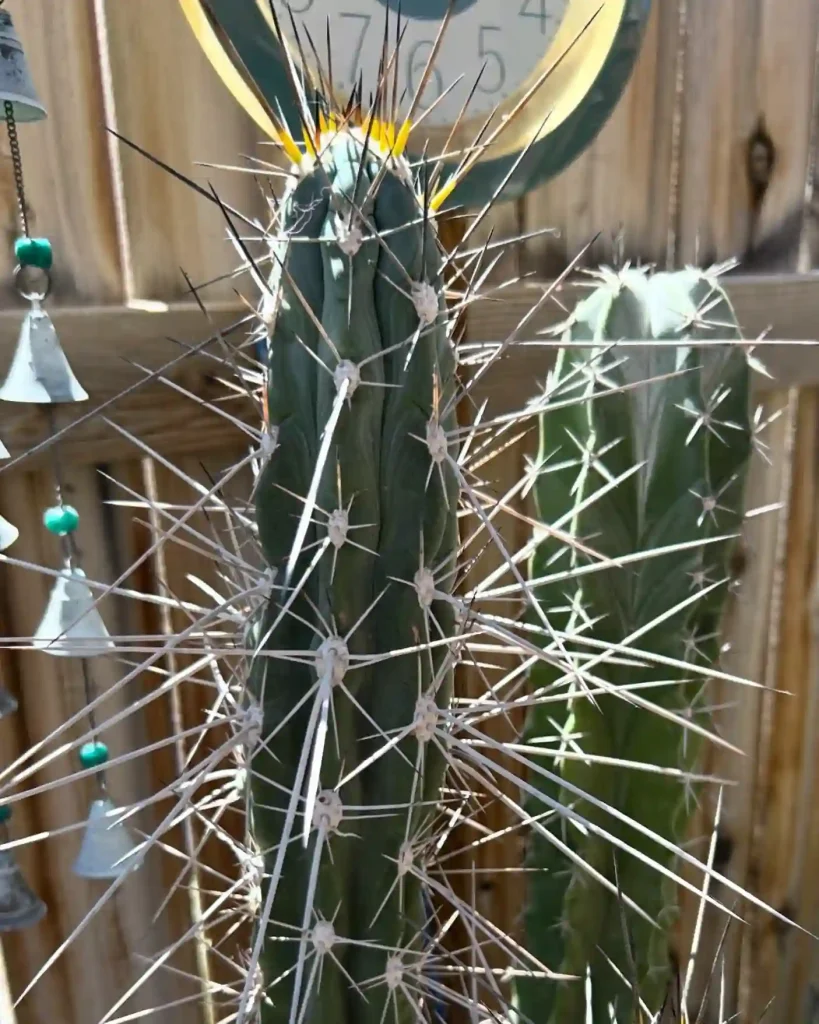
What is Daphne?
Daphne belong to the Thymelaeaceae family, is a captivating genus of shrubs that can transform your garden with its striking appearance and enchanting fragrance. Known for their evergreen foliage and clusters of sweetly scented flowers, Daphnes are popular among gardeners who appreciate both beauty and a bit of challenge in their plant care. These plants can vary in size, from small shrubs to larger bushes, and they typically bloom in late winter to early spring, adding color to the garden when most other plants are still dormant.
Daphne species
- Daphne acutiloba Rehder
- Daphne alpina L.
- Daphne altaica Pall.
- Daphne angustiloba Rehder
- Daphne arbuscula Čelak.
- Daphne arisanensis Hayata
- Daphne aurantiaca Diels
- Daphne axillaris (Merr. & Chun) Chun & C.F.Wei
- Daphne axilliflora (Keissl.) Pobed.
- Daphne baksanica Pobed.
- Daphne bholua Buch.-Ham. ex D.Don
- Daphne blagayana Freyer
- Daphne brevituba H.F.Zhou ex C.Y.Chang
- Daphne caucasica Pall.
- Daphne championii Benth.
- Daphne chingshuishaniana S.S.Ying
- Daphne cneorum L.
- Daphne depauperata H.F.Zhou ex C.Y.Chang
- Daphne domini Halda
- Daphne emeiensis C.Y.Chang
- Daphne erosiloba C.Y.Chang
- Daphne esquirolii H.Lév.
- Daphne feddei H.Lév.
- Daphne gemmata E.Pritz.
- Daphne genkwa Siebold & Zucc.
- Daphne giraldii Nitsche
- Daphne glomerata Lam.
- Daphne gnidioides Jaub. & Spach
- Daphne gnidium L.
- Daphne gracilis E.Pritz.
- Daphne grueningiana H.J.P.Winkl.
- Daphne × hauseri Halda
- Daphne hekouensis H.W.Li & Y.M.Shui
- Daphne × hendersonii Hodgkin ex C.D.Brickell & B.Mathew
- Daphne holosericea (Diels) Hamaya
- Daphne × houtteana Lindl. & Paxton
- Daphne jarmilae Halda
- Daphne jasminea Sm.
- Daphne jejudoensis M.Kim
- Daphne jezoensis Maxim.
- Daphne jinyunensis C.Yung Chang
- Daphne jinzhaiensis D.C.Zhang & J.Z.Shao
- Daphne × juraseki Halda
- Daphne kamtschatica Maxim.
- Daphne kingdon-wardii Halda
- Daphne kiusiana Miq.
- Daphne kosaninii (Stoj.) Stoj.
- Daphne kurdica (Bornm.) Bornm.
- Daphne laciniata Lecomte
- Daphne laureola L.
- Daphne leishanensis H.F.Zhou ex C.Y.Chang
- Daphne limprichtii H.J.P.Winkl.
- Daphne longilobata (Lecomte) Turrill
- Daphne longituba C.Yung Chang
- Daphne ludlowii D.G.Long & Rae
- Daphne luzonica C.B.Rob.
- Daphne macrantha Ludlow
- Daphne malyana Blečić
- Daphne mezereum L.
- Daphne miyabeana Makino
- Daphne modesta Rehder
- Daphne morrisonensis C.E.Chang
- Daphne mucronata Royle
- Daphne myrtilloides Nitsche
- Daphne nana Tagawa
- Daphne × neapolitana (Lindl.) Jacques
- Daphne odora Thunb.
- Daphne ogisui C.D.Brickell, B.Mathew & Yin Z.Wang
- Daphne oleoides Schreb.
- Daphne pachyphylla D.Fang
- Daphne papyracea Wall. ex G.Don
- Daphne pedunculata H.F.Zhou ex C.Y.Chang
- Daphne penicillata Rehder
- Daphne petraea Leyb.
- Daphne pontica L.
- Daphne pseudomezereum A.Gray
- Daphne pseudosericea Pobed.
- Daphne purpurascens S.C.Huang
- Daphne retusa Hemsl.
- Daphne rhynchocarpa C.Y.Chang
- Daphne rodriguezii Texidor
- Daphne rosmarinifolia Rehder
- Daphne × rossetii H.Correvon & Halda
- Daphne × savensis Daksk., Seliškar & Vreš
- Daphne sericea Vahl
- Daphne × sillingeri Halda
- Daphne sojakii Halda
- Daphne sophia Kolenicz.
- Daphne souliei (Lecomte) Aymonin
- Daphne stapfii Bornm. & Keissl.
- Daphne striata Tratt.
- Daphne sureil W.W.Sm. & Cave
- Daphne tangutica Maxim.
- Daphne taurica Kotov
- Daphne taylorii Halda
- Daphne tenuiflora Bureau & Franch.
- Daphne thanguensis J.Ghosh, Midday, S.K.Dey & D.Maity
- Daphne × thauma Farrer
- Daphne transcaucasica Pobed.
- Daphne tripartita H.F.Zhou ex C.Y.Chang
- Daphne velenovskyi Halda
- Daphne wangiana (Hamaya) Halda
- Daphne wolongensis C.D.Brickell & B.Mathew
- Daphne xichouensis H.F.Zhou ex C.Y.Chang
- Daphne yangtoushanensis S.S.Ying
- Daphne yunnanensis H.F.Zhou ex C.Y.Chang
How to care for Daphne?
Caring for Daphne involves paying close attention to its specific needs. First, ensure the plant is in a location with well-draining soil; Daphne does not like wet feet. A slightly acidic to neutral soil pH is ideal. Daphne thrives in partial shade, though some varieties can handle full sun if they receive enough water. Regular watering is crucial, especially during dry periods, but be cautious not to overwater. The key is to maintain a balance – the soil should be moist but never soggy. Fertilize sparingly, as too much can harm the plant.
How to propagate Daphne?
Propagating Daphne can be a bit tricky, but it’s rewarding. The most effective method is by taking softwood cuttings in late spring or early summer. Here’s how you can do it:
- Prepare the Cuttings: Choose healthy, non-flowering stems about 4-6 inches long. Make a clean cut just below a leaf node.
- Rooting Hormone: Dip the cut end in rooting hormone powder to encourage root growth.
- Planting: Place the cuttings in a pot filled with a mix of peat and perlite. Water them gently and cover the pot with a plastic bag or a clear plastic dome to maintain humidity.
- Placement: Keep the pot in a warm, bright location out of direct sunlight. The cuttings should root within a few months.
- Transplanting: Once the cuttings have established roots and show new growth, they can be potted up individually and eventually planted in the garden.
How to prune a Daphne?
Pruning Daphne helps maintain its shape and health, but it should be done with care. Here’s how you can prune your Daphne:
- Timing: The best time to prune Daphne is after it has finished blooming, usually in late spring or early summer.
- Method: Use sharp, clean pruning shears. Remove any dead or damaged branches and trim back any excessively long stems to encourage a fuller shape.
- Shape: Avoid heavy pruning, as Daphne’s growth is slow and it can take a while to recover. Aim for light, selective pruning to maintain the plant’s natural form.
- Disposal: Dispose of pruned material carefully, as some Daphne varieties can be toxic if ingested.
How to revive a Daphne plant?
If your Daphne plant appears to be struggling, here are steps you can take to revive it:
- Check the Soil: Ensure the soil is well-draining and not waterlogged. Amend the soil if needed to improve drainage.
- Watering: Adjust your watering practices. If the plant is too dry, water it thoroughly. If overwatered, allow the soil to dry out before watering again.
- Inspect for Pests: Look for signs of pests or diseases, such as discolored leaves or unusual spots. Treat any issues with appropriate methods.
- Fertilization: Avoid over-fertilizing. A balanced, slow-release fertilizer can help, but use it sparingly.
- Location: Ensure the plant is in the right location with adequate light and protection from harsh conditions.
What to Plant with Daphne?
Pairing Daphne with complementary plants can enhance your garden’s beauty. Consider planting it alongside:
- Low-growing Evergreens: Such as Heuchera or Hosta, which provide a contrast to Daphne’s foliage and help highlight its blooms.
- Spring Bulbs: Tulips or daffodils can bloom around the same time as Daphne, creating a colorful display.
- Shade-tolerant Plants: Like Ferns or Astilbe, which thrive in similar light conditions.
By thoughtfully selecting companion plants, you can create a harmonious and visually appealing garden space that highlights Daphne’s charm.
With these tips, you’ll be well-equipped to care for and enjoy your Daphne plants. They’re a beautiful addition to any garden, and with a bit of attention, they can thrive and bring joy for many seasons to come.
If i die, water my plants!



